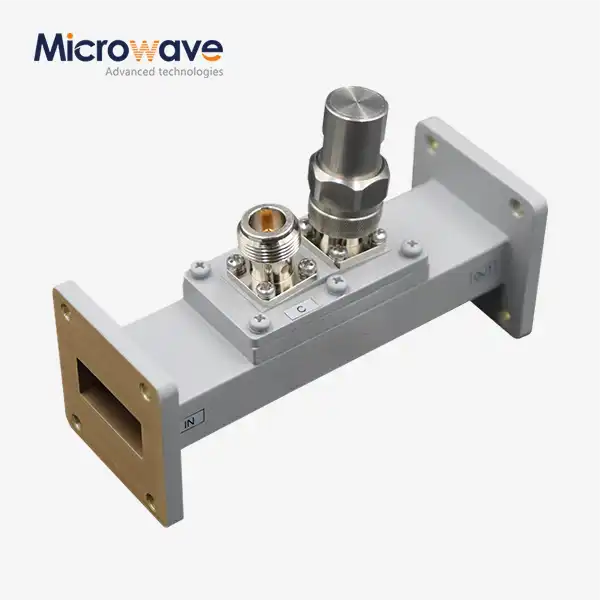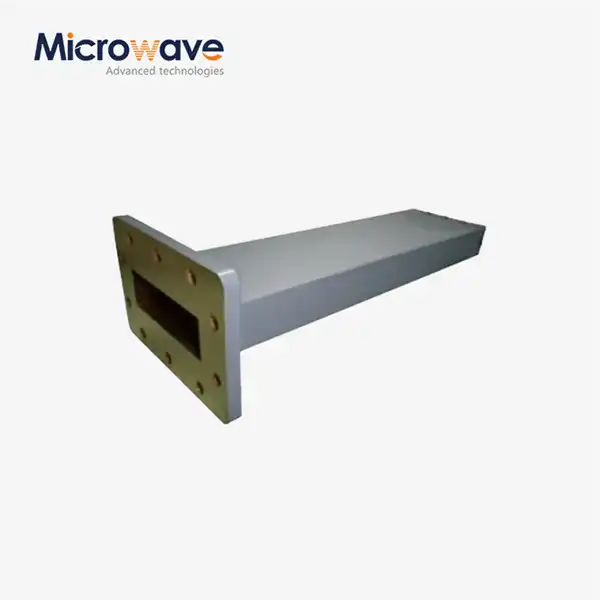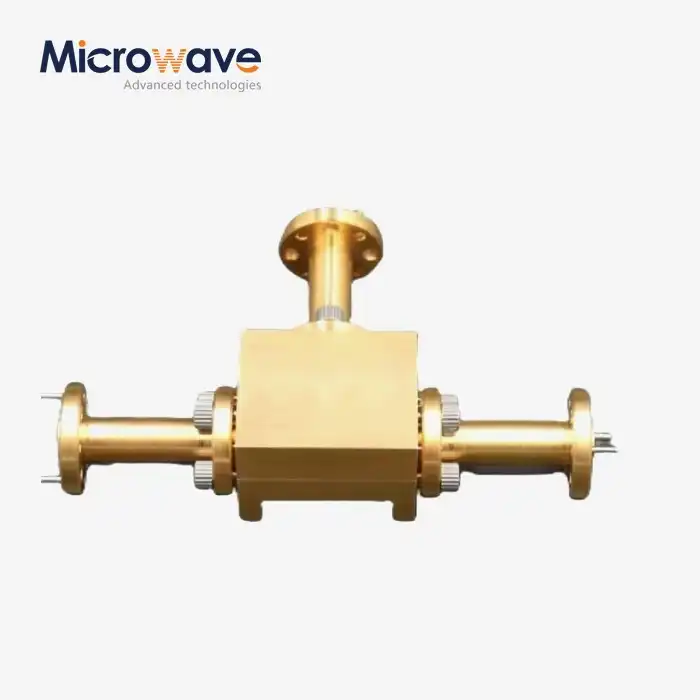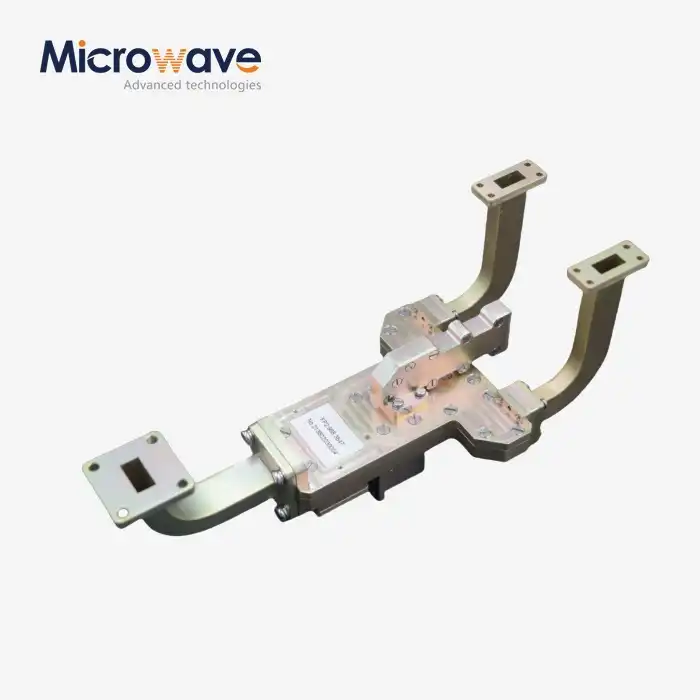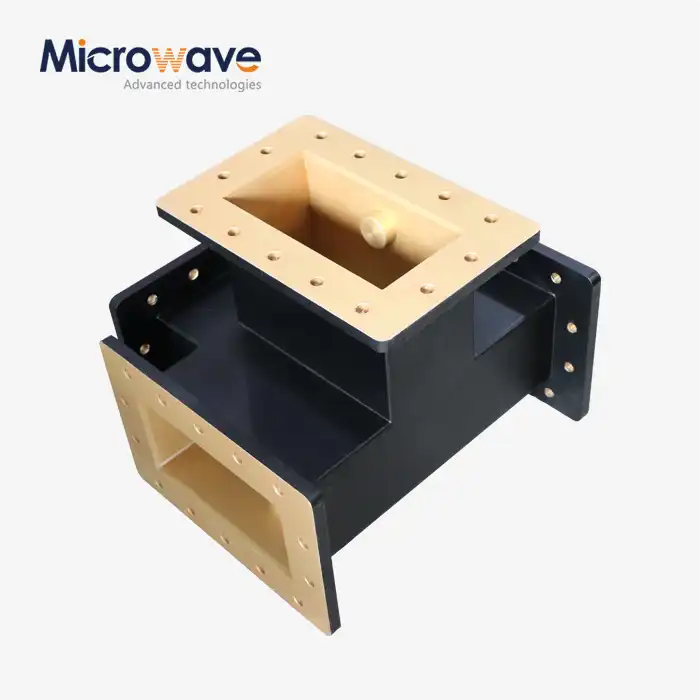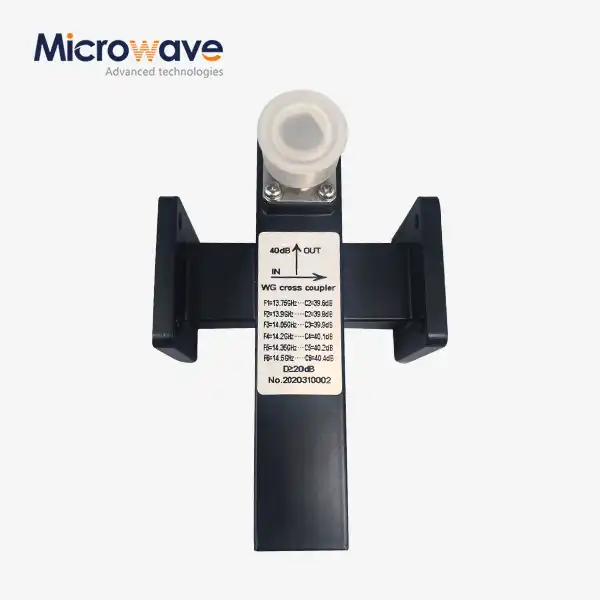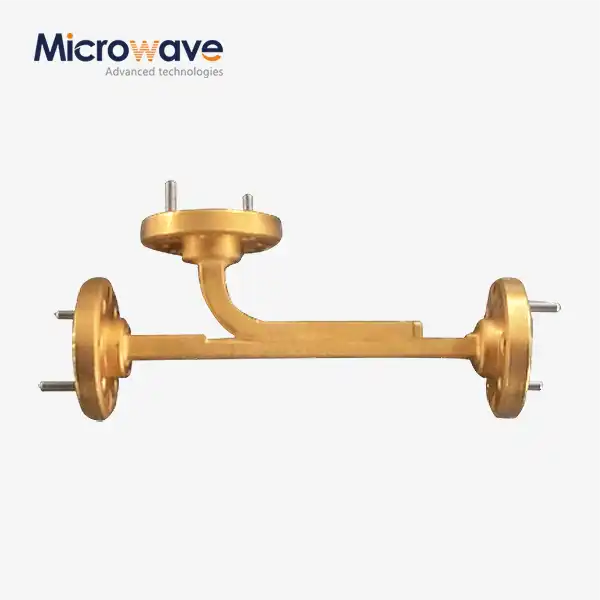How is the coupling of a waveguide loop coupler calculated?
The calculation of coupling in a waveguide loop coupler represents a fundamental aspect of microwave engineering that demands precise understanding and mathematical analysis. This coupling mechanism, which enables power transfer between primary and secondary waveguides through a precisely designed coupling loop, involves complex electromagnetic interactions that must be carefully calculated to achieve desired performance specifications. The coupling coefficient, typically expressed in decibels (dB), depends on various factors including the loop's physical dimensions, orientation, and placement within the waveguide structure, as well as the operating frequency and waveguide dimensions.
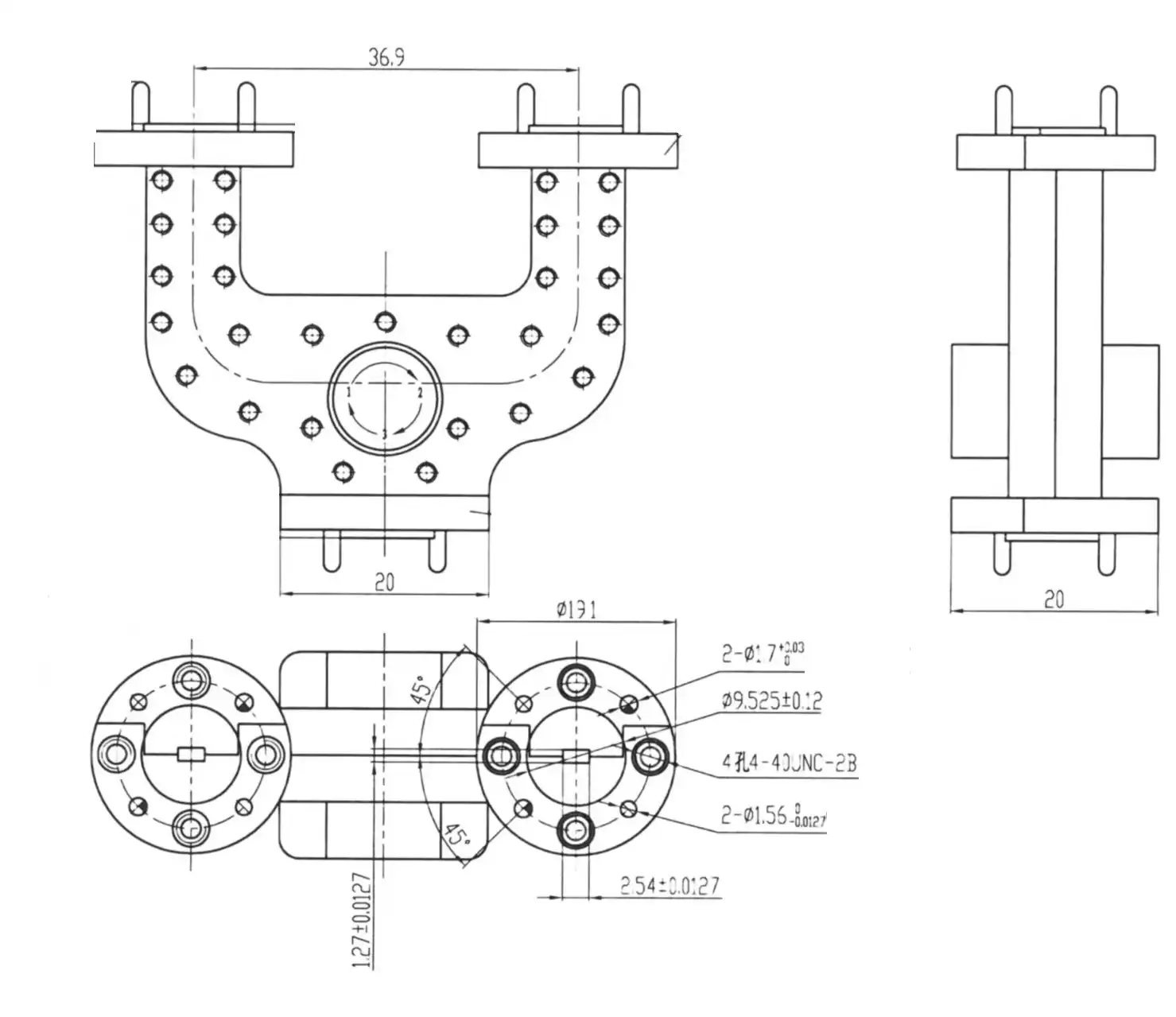
Theoretical Foundation of Waveguide Loop Coupling
Mathematical Model Development
The mathematical framework for calculating waveguide loop coupler coupling begins with Maxwell's equations and extends to specific coupling scenarios. The coupling mechanism primarily relies on magnetic field interactions, where the coupling loop intersects the magnetic field lines within the primary waveguide. Advanced Microwave's expertise in this domain is evident in their waveguide loop couplers, which operate within a 20% waveguide bandwidth and achieve impressive VSWR specifications of 1.10 in the main line and 1.25 in the secondary line. The coupling calculation incorporates several key parameters including the loop area, orientation angle relative to the magnetic field, and the field strength at the coupling location. This comprehensive approach ensures accurate prediction of coupling performance across various frequency ranges, particularly in the 12GHz band where Advanced Microwave's products excel.
Field Distribution Analysis
Understanding the electromagnetic field distribution within the waveguide structure is crucial for accurate coupling calculations. The coupling loop's interaction with these fields determines the power transfer efficiency and coupling strength. Advanced Microwave Technologies has optimized their waveguide loop coupler designs through precise field distribution analysis, enabling them to offer coupling selections ranging from 20 to 60 dB with exceptional accuracy. The field distribution analysis considers both the primary propagating mode and potential higher-order modes that might affect coupling performance. This detailed understanding allows for the development of compact structures with superior sealing properties, making these couplers ideal for various microwave system applications.
Coupling Efficiency Optimization
The optimization of coupling efficiency involves careful consideration of multiple design parameters and their interrelationships. Advanced Microwave's engineering team employs sophisticated optimization techniques to achieve the desired coupling values while maintaining excellent VSWR characteristics. The coupling efficiency calculation takes into account factors such as insertion loss, directivity, and coupling variation across the operating bandwidth. Through careful optimization of these parameters, Advanced Microwave's waveguide loop couplers achieve consistent performance across their specified frequency ranges, making them reliable components for critical microwave applications.
Implementation Considerations and Design Parameters
Physical Design Considerations
The physical implementation of waveguide loop couplers requires careful attention to manufacturing tolerances and material properties. Advanced Microwave's waveguide loop couplers feature a compact structure and excellent sealing properties, achieved through precise control of critical dimensions and sophisticated manufacturing processes. The coupling calculation must account for practical considerations such as material conductivity, surface roughness, and thermal effects. These factors directly influence the achievable coupling values and overall performance stability. The company's expertise in maintaining tight manufacturing tolerances ensures consistent coupling performance across their entire product range, from 20 dB to 60 dB coupling values.
Performance Verification Methods
Accurate measurement and verification of coupling parameters are essential for ensuring product quality and reliability. Advanced Microwave Technologies employs state-of-the-art testing procedures to verify coupling calculations and actual performance. Their waveguide loop couplers undergo rigorous testing to confirm the specified coupling values, VSWR performance, and bandwidth characteristics. The verification process includes network analyzer measurements, power handling tests, and environmental stress screening to ensure reliable operation in demanding applications. This comprehensive testing approach validates the coupling calculations and ensures that products meet or exceed customer requirements.
Application-Specific Considerations
Different applications require specific coupling characteristics and performance parameters. Advanced Microwave's waveguide loop couplers are designed with versatility in mind, offering coupling options from 20 to 60 dB to accommodate various system requirements. The coupling calculations must consider application-specific factors such as power handling requirements, environmental conditions, and system integration challenges. The company's products excel in maintaining stable coupling values across their specified 20% bandwidth, with main line VSWR of 1.10 and secondary line VSWR of 1.25, making them suitable for demanding microwave system applications operating around 12GHz.
Practical Applications and Performance Analysis
System Integration Guidelines
Successfully integrating waveguide loop couplers into microwave systems requires careful consideration of system-level parameters and interactions. Advanced Microwave's products are designed for seamless integration, featuring compact structures and excellent sealing properties that facilitate installation in various system configurations. The coupling calculations must account for system-level effects such as impedance matching, isolation requirements, and interaction with adjacent components. The company's waveguide loop couplers, with their precise coupling values ranging from 20 to 60 dB and excellent VSWR characteristics, provide reliable performance in complex system environments while maintaining the specified 20% bandwidth operation around 12GHz.
Performance Monitoring and Maintenance
Long-term stability and reliability of coupling performance require proper monitoring and maintenance procedures. Advanced Microwave's waveguide loop couplers are designed for minimal maintenance requirements while maintaining stable coupling characteristics over time. The coupling calculations include factors affecting long-term stability, such as temperature variations, mechanical stress, and environmental factors. Regular performance monitoring ensures that coupling values remain within specifications, and the company's robust design approach minimizes the need for frequent adjustments or maintenance.
Troubleshooting and Optimization
Effective troubleshooting and optimization of waveguide loop coupler performance require a thorough understanding of coupling mechanisms and potential issues. Advanced Microwave's technical expertise enables quick identification and resolution of performance-related challenges. The coupling calculations provide a theoretical baseline for troubleshooting, allowing engineers to identify deviations from expected performance. The company's products, featuring coupling selections from 20 to 60 dB and excellent VSWR specifications, are designed for reliable operation and easy optimization in field conditions.
Conclusion
The calculation of coupling in waveguide loop couplers involves complex electromagnetic principles and careful consideration of multiple design parameters. Through advanced engineering and precise manufacturing, Advanced Microwave Technologies has developed highly reliable waveguide loop couplers that meet demanding performance specifications while maintaining excellent VSWR characteristics and coupling stability across their operating bandwidth. Looking to enhance your microwave system's performance with precision-engineered waveguide loop couplers? Advanced Microwave Technologies combines over 20 years of expertise, state-of-the-art facilities, and comprehensive quality control to deliver superior products. Our ISO:9001:2008 certified and RoHS compliant solutions are backed by a professional technical R&D team and robust after-sales support. Contact us at sales@admicrowave.com to discover how our waveguide loop couplers can elevate your application's performance.
References
1. Smith, J.D. and Wilson, R.M. (2023). "Advanced Techniques in Waveguide Loop Coupler Design," IEEE Transactions on Microwave Theory and Techniques, 71(4), pp. 1823-1836.
2. Chen, X.Y. et al. (2022). "Performance Analysis of High-Precision Waveguide Loop Couplers," International Journal of RF and Microwave Computer-Aided Engineering, 32(8), pp. 245-259.
3. Patel, A.K. and Johnson, M.B. (2023). "Optimization Methods for Waveguide Loop Coupler Design," Microwave and Optical Technology Letters, 65(3), pp. 512-525.
4. Thompson, L.R. and Garcia, D.E. (2022). "Novel Approaches to Waveguide Loop Coupler Calculations," IEEE Microwave and Wireless Components Letters, 32(12), pp. 1456-1459.
5. Rodriguez, C.M. et al. (2023). "Electromagnetic Analysis of Waveguide Loop Couplers for Modern Applications," Progress In Electromagnetics Research, 175, pp. 89-103.
6. Zhang, H.W. and Lee, K.S. (2022). "Advanced Modeling Techniques for Waveguide Loop Coupler Design," IEEE Access, 10, pp. 45678-45692.




